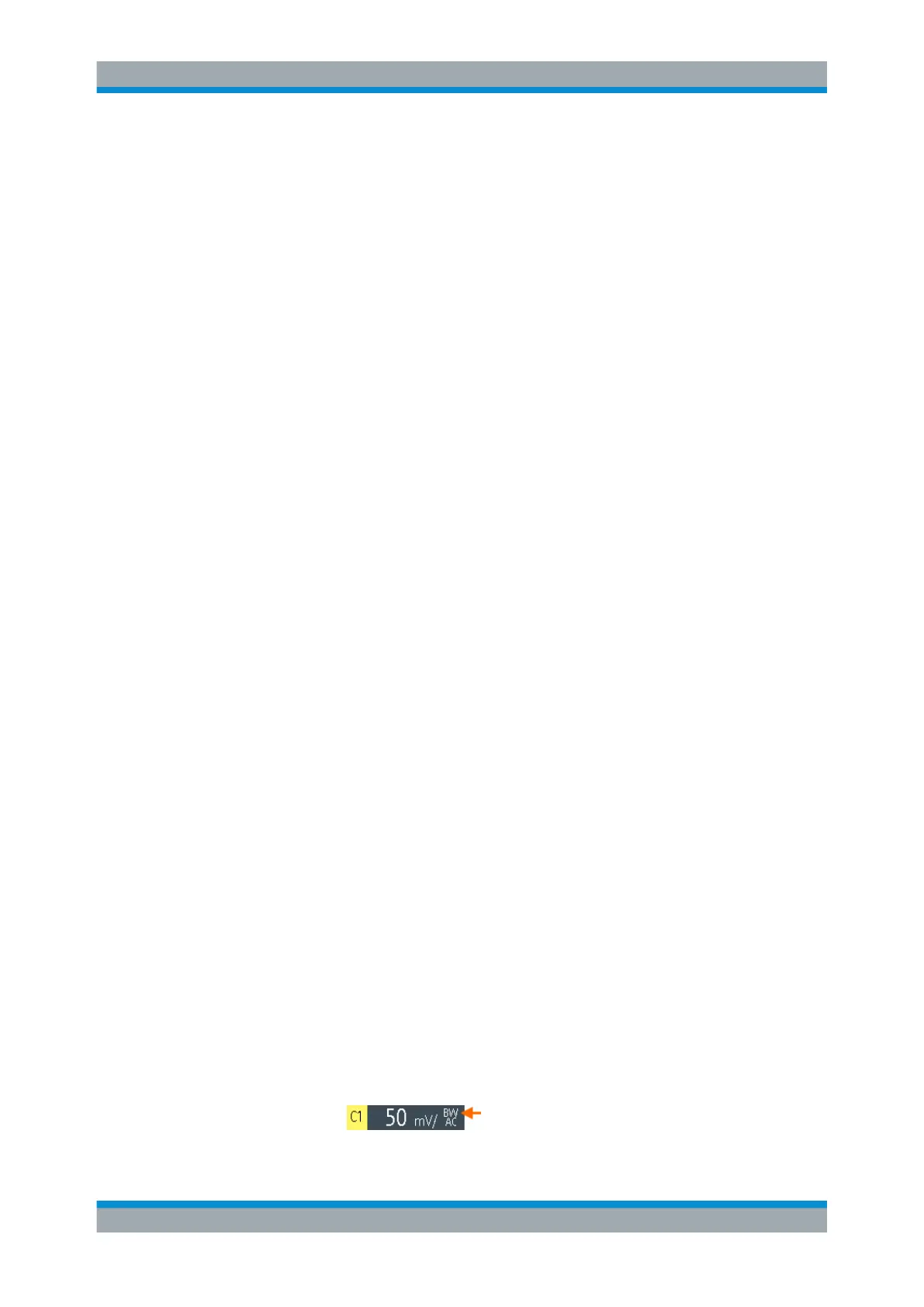Waveform Setup
R&S
®
Scope Rider RTH
42User Manual 1326.1578.02 ─ 12
Probe Setting
Selects the attenuation factor of the connected probe. The vertical scaling is adjusted
accordingly, and measured values are multiplied by this factor so that the displayed
values are equal to the actual signal values.
Make sure to set the attenuation factor on the instrument according to the probe being
used. Otherwise, the measurement results do not reflect the actual voltage level, and
you might misjudge the actual risk.
The menu lists the common attenuation factors. If the required factor is not in the list,
select "User" and set the Probe Factor.
Remote command:
CHANnel<m>:PROBe on page 300
Probe Factor
Sets a user-defined attenuation factor if the probe has an uncommon attenuation, and
the unit (V or A). The setting is available if "Probe Setting" is set to "User".
Remote command:
PROBe<m>:SETup:ATTenuation:MANual on page 301
PROBe<m>:SETup:ATTenuation:UNIT on page 301
Bandwidth
Selects the bandwidth limit. The full instrument bandwidth indicates the range of fre-
quencies that the instrument can acquire and display accurately with less than 3 dB
attenuation.
For analog applications, the highest signal frequency determines the required oscillo-
scope bandwidth. The oscilloscope bandwidth should be at least 3 times higher than
the maximum frequency included in the analog test signal to measure the amplitude
with high accuracy.
Most test signals are more complex than a simple sine wave and include several spec-
tral components. A digital signal, for example, is built up of several odd harmonics. For
digital signals, the oscilloscope bandwidth should be at least 5 times higher than the
clock frequency to be measured.
The oscilloscope is not an autonomous system. You need a probe to measure the sig-
nal, and the probe has a limited bandwidth, too. The combination of oscilloscope and
probe creates a system bandwidth. To reduce the effect of the probe on the system
bandwidth, the probe bandwidth should exceed the bandwidth of the oscilloscope, the
recommended factor is 1.5 x oscilloscope bandwidth.
See also: Chapter 3.2.2, "Effect of the Bandwidth Filter", on page 44.
For FFT analysis, the channel bandwidth also determines the frequency range dis-
played in the spectrum (see "Frequency range" on page 108).
"Full"
At full bandwidth, all frequencies in the specified range are acquired
and displayed. Full bandwidth is used for most applications.
"x MHz, x kHz"
Frequency limit. Frequencies above the selected limit are removed to
reduce noise at different levels. Limited bandwidth is indicated in the
channel label.
Vertical Setup

